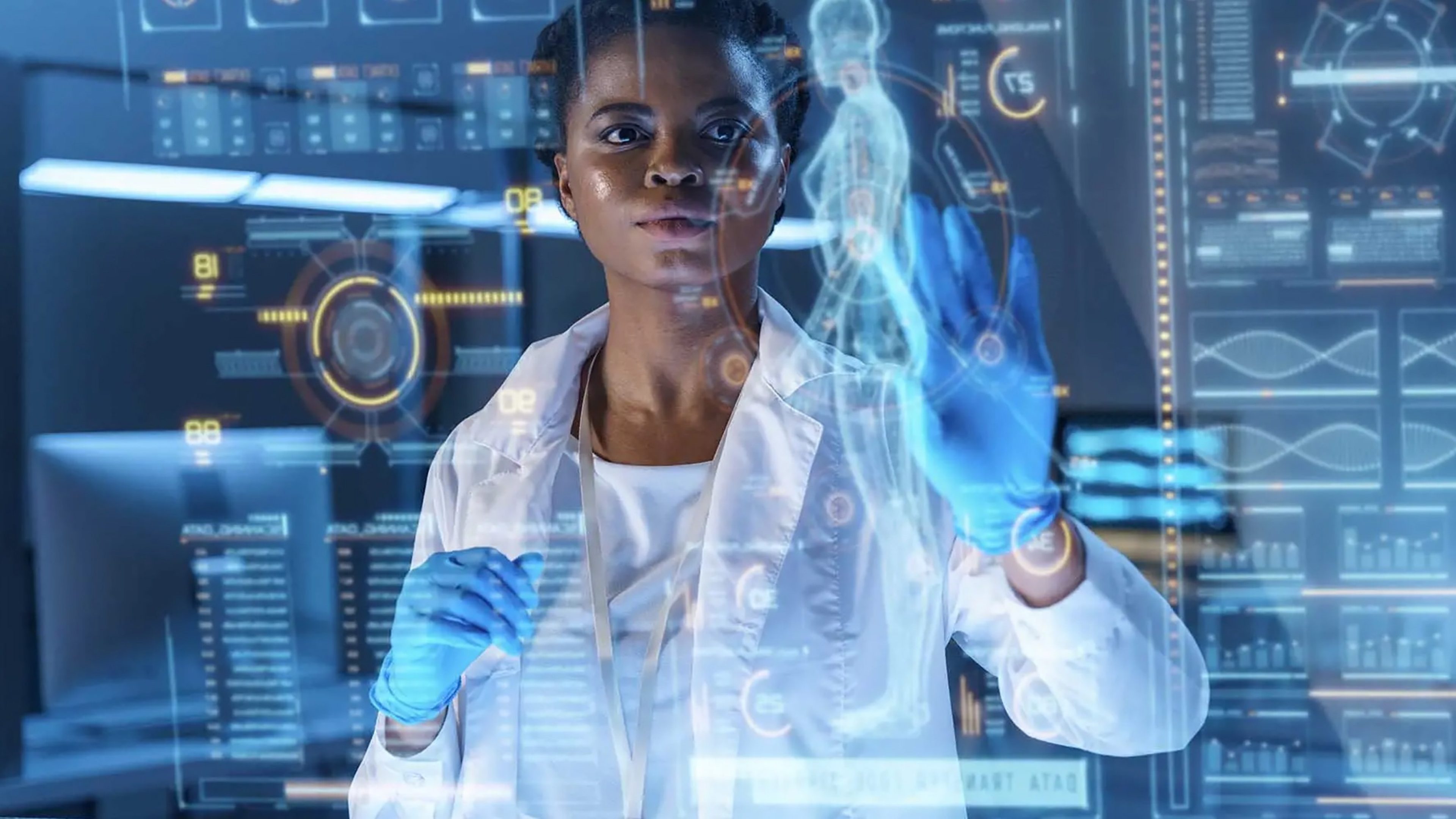Since returning from his space mission, German physicist and former scientist-astronaut Prof. Ulrich Walter has been working to make robotics and artificial intelligence understandable to the general public. In this interview, he reveals how intelligent AI actually is, whether robots can lie and how service robotics can make it easier to live a self-determined life in old age.
Mr Walter, about 30 years ago, you spent ten days in space. What do you remember most about this momentous trip?
Three things particularly impressed me. First of all, the take-off itself – the incredible feeling of being accelerated to a speed of 28 000 kilometres per hour in just eight minutes and then circling the earth in 90 minutes. Another highlight was undoubtedly the sight of our planet from space. And the third was the feeling of weightlessness that you just can’t simulate on earth. I would also like to emphasise that this outer space adventure also involved an enormous amount of work.
Was it your childhood dream to become an astronaut?
No. Not because I wasn't interested, but because I grew up in the '60s, and at that time, space was something for Americans and Russians. Germans weren't yet involved. I love science, which is why I always wanted to become a physicist. However, when I saw on TV that Germany was looking for scientist-astronauts, that settled it. What could be better than doing science in space? I applied right away.
Sounds like you actually would have liked to go up there more than once?
Yes. If you have a ticket for me, I would go immediately (laughs). I’d take any opportunity to go back into space.


Prof. Ulrich Walter embarked on a ten-day mission aboard the Space Shuttle Columbia headed towards Earth orbit in April 1993 (Photo: NASA)
On board with you was a robot arm that you used to conduct the first robotics experiment in space. What was a robot arm capable of in 1993?
That was something completely new back then. The idea was that astronauts shouldn’t necessarily have to go out into space themselves to complete elaborate missions outside the ship. Instead, they should be able to control a robot arm from inside the spacecraft – a method that is now used successfully on space stations. This saves time and money.
Incidentally, this robot arm is now also used in manufacturing, as a refined commercial version of the original concept.
As Chair of Astronautics at the Technical University of Munich, you conduct research in the field of service robotics. What does that mean, exactly?
Service robots work differently from ordinary robots. A conventional robot, like the ones typically used in car manufacturing, always performs the same precise motion, down to a tenth of a millimetre. This means that it is able, for example, to set welding points extremely precisely, and do so faster and more accurately than any human being. However, if you get in the way of one of these robots, it becomes dangerous because it can’t change its course or otherwise react to unplanned situations. Service robots, on the other hand, do have this ability. For example, if they are packing online purchases in boxes on a conveyor belt, they have to handle a glass differently than a sweater. This adaptability also enables service robots to interact with people. They recognise when they encounter a person and immediately stop executing their movement.
Thirty years ago, would you have thought that service robotics would be where it is today?
No. Robotics dates back to the 1950s, and back then people thought that ten years later they would already have the first robots that could do everything. But these predictions turned out to be unrealistic. Robotics also requires precise control, and there is complex mathematics behind it. Nowadays, we use artificial intelligence to automate certain motion sequences so that they no longer need to be explicitly controlled. It’s only thanks to modern technology that we have been able to turn simple robot arms into intelligent service robots.

Robotics and artificial intelligence are often used synonymously. How do you explain the difference in layperson’s terms?
A robot itself is pretty stupid. It can move, but it doesn’t know how. The command behind the movement has been input somewhere in a very powerful computer. So the “intelligence” resides somewhere else entirely. We are currently in a phase of development where we’re trying to build this intelligence directly into the robot itself. However, the difficulty is that today’s computers require so much space and power that they cannot be housed in anything close to the size of a human head. The human brain is much more powerful in this regard.
How do you define artificial intelligence? What distinguishes it from human intelligence?
My fellow experts and I prefer the term “machine intelligence,” which already suggests that we are still a long way from human intelligence. AI tries to imitate human intelligence in all its facets. This encompasses much more than just logical-mathematical intelligence; for example, humans also have social intelligence, spatial intelligence and movement intelligence. Artificial intelligence is still light years away from this.
Nevertheless, there is still a great deal of scepticism or even fear surrounding AI…
Yes, people are very afraid of artificial intelligence because no one understands it. I like to compare AI to electricity. We learn early on in life that you just don’t touch the socket. But once you understand how a socket works, you actually can touch it – you just have to know where. And it's the same with AI. If you understand where the boundaries are, how it works and why and how it responds, then it's quite simple. You need to know when to trust AI or when it’s fibbing or hallucinating. But as long as you don't understand that, you’re going to be scared. Ignorance creates fear.
Speaking of fibbing, can a robot deliberately lie?
No, because robots have no consciousness. But AI lies or hallucinates without knowing it. ChatGPT, for example, draws all its knowledge from the internet and is unable to judge what is and isn't true. So if I really want to know something, I have to research and verify it myself.
You also conduct research in the field of geriatronics – a fusion of geriatric medicine and robotics. What role do robotics and AI play in helping people live a self-determined life in old age?
Geriatronics can help older people live longer in their own home, to name one example. If a person suddenly feels unwell, for instance, a robot can connect to a doctor who makes an initial analysis via telerobotics, provides tailored assistance and alerts emergency services if needed. In addition, a robot can also assist with everyday tasks such as vacuuming, fetching the newspaper or bringing a coffee. With a robot you can also play chess, have a chat or even fool around a bit. And as soon as the robot reaches its limits, human intelligence can intervene in the background.
Where do robotics and AI reach their limits in this area?
Social and interpersonal interactions cannot be replaced by AI. For example, facial expressions are essential for interpersonal communication. But how are you supposed to teach a robot facial expressions? A hearty laugh not only includes a smile, but also sparkling eyes and many other aspects. We’re nowhere near achieving this yet.

Where do you see the greatest potential of AI for companies?
AI is perfect for companies, as each one has its own specific niche for which certain specialist expertise is required. This expertise can be perfectly translated into AI. All you have to do is feed your own AI system with knowledge and train it. This requires an extremely powerful computer and a lot of time for training. Having your own ChatGPT with company-specific knowledge helps enormously.
How much AI and robotics would we find in your home?
Oh, I chat with ChatGPT almost every day. If I need some information, ChatGPT is really very helpful. I just ask a brief question and immediately get an answer.
So no fancy robot to fetch the paper or bring you a coffee?
No, I still like doing that myself (laughs). But someday I may need that kind of help.

Prof. Ulrich Walter
Prof. Ulrich Walter (b. 1954) holds the Chair of Astronautics at the Technical University of Munich and conducts research in the field of space robotics and robotic assistance for independent living in old age. He studied physics at the University of Cologne and received his doctorate there in 1985. In 1986, he applied for a job as a scientist-astronaut. In 1993, he was on board the D2 mission for ten days in space, where he conducted several robotics experiments. Walter is a member of the Bavarian Ethics Council and advises the Bavarian state government on issues of technology and AI.
This interview with Prof. Ulrich Walter took place as part of his presentation at the Swiss Institute of International Studies (SIAF).



